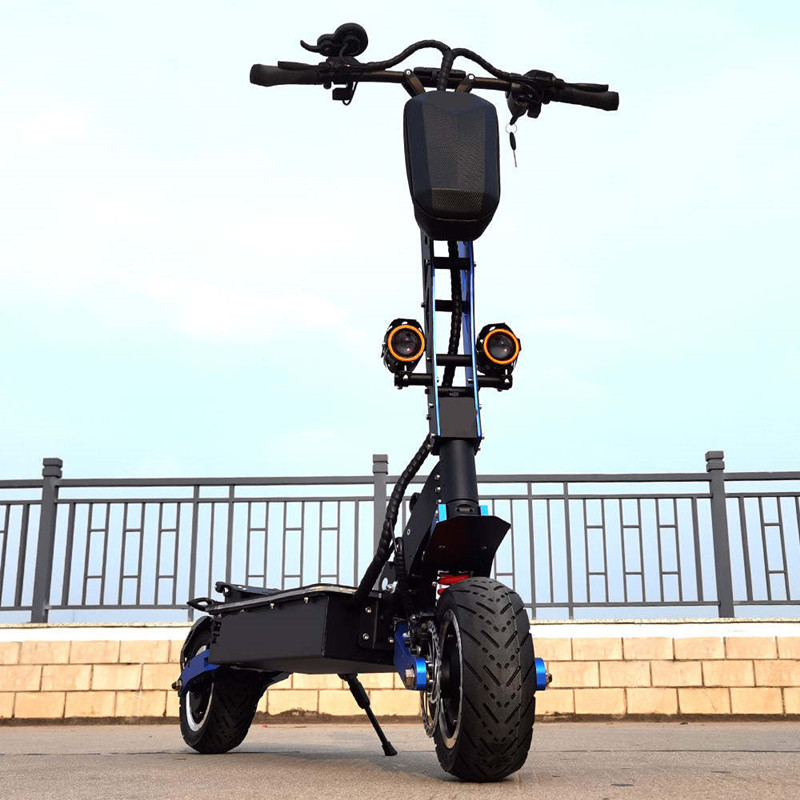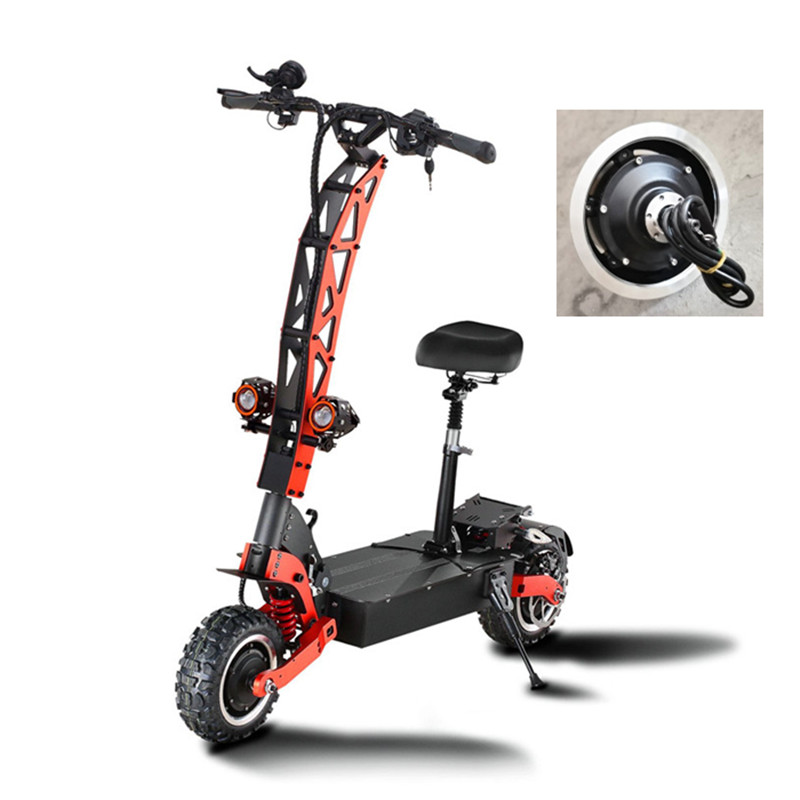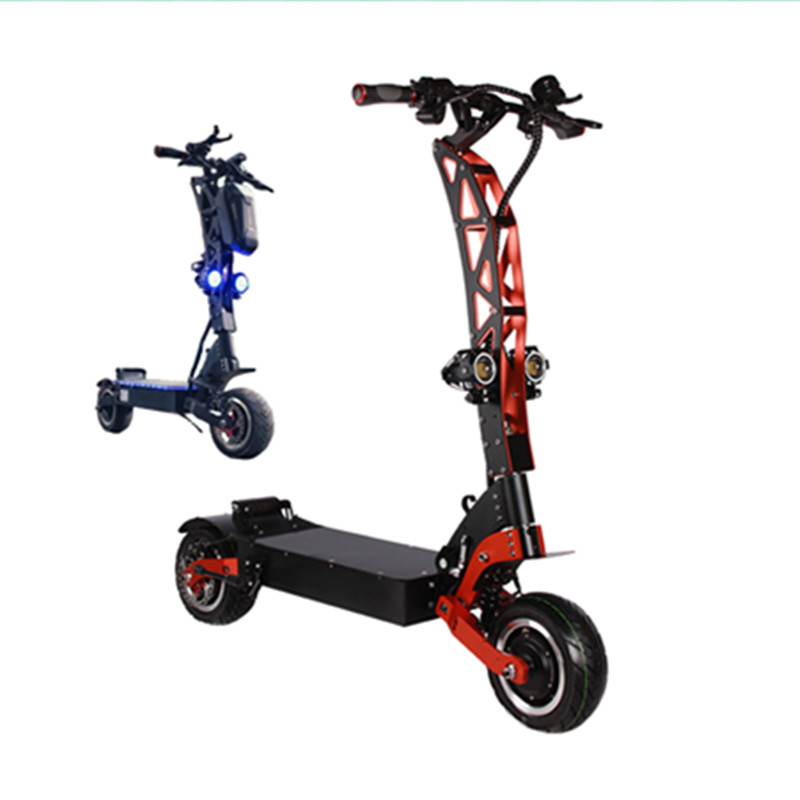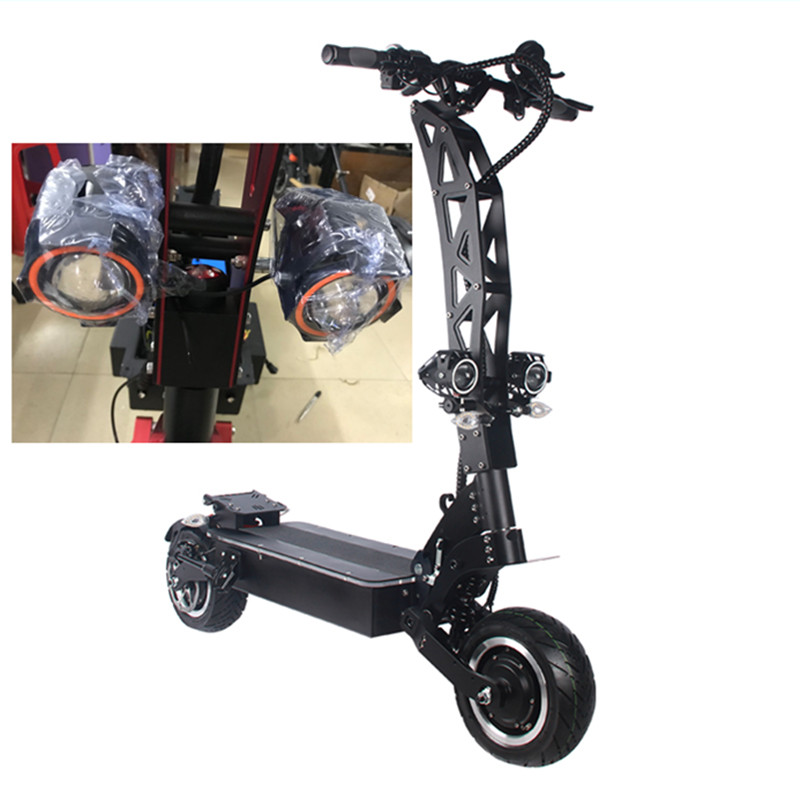Description
japanese electric scooter
moto elect
trottinette electrique
| Parameter | |
| Frame | High strength aluminum alloy 6061, surface paint |
| Forking forks | One forming front fork and rear fork |
| Electric machinery | 11 “72V 10000W brushless toothed high speed motor |
| Controller | 72V 70SAH*2 tube vector sinusoidal brushless controller (mini type) |
| Battery | 72V 40AH-45AH module lithium battery (Tian energy 21700) |
| Meter | LCD speed, temperature, power display and fault display |
| GPS | Location and telecontrol alarm |
| Braking system | After one disc, does not contain harmful substance, in compliance with international environmental requirements |
| Brake handle | Forging brake of aluminum alloy with power breaking function |
| Tyre | ZhengXin tire 11 inch |
| Headlight | LED lenticular bright headlights and driving lights |
| Maximum speed | 110km |
| Extension mileage | 115-120km |
| Motor | 5000watt per piece |
| Wheel | 11inch |
| Net weight and gross weight | 54kg/63kg |
| Product size | L* w* h: 1300*560*1030 (mm) |
| Packaging size | L* w* h: 1330*320*780 (mm) |
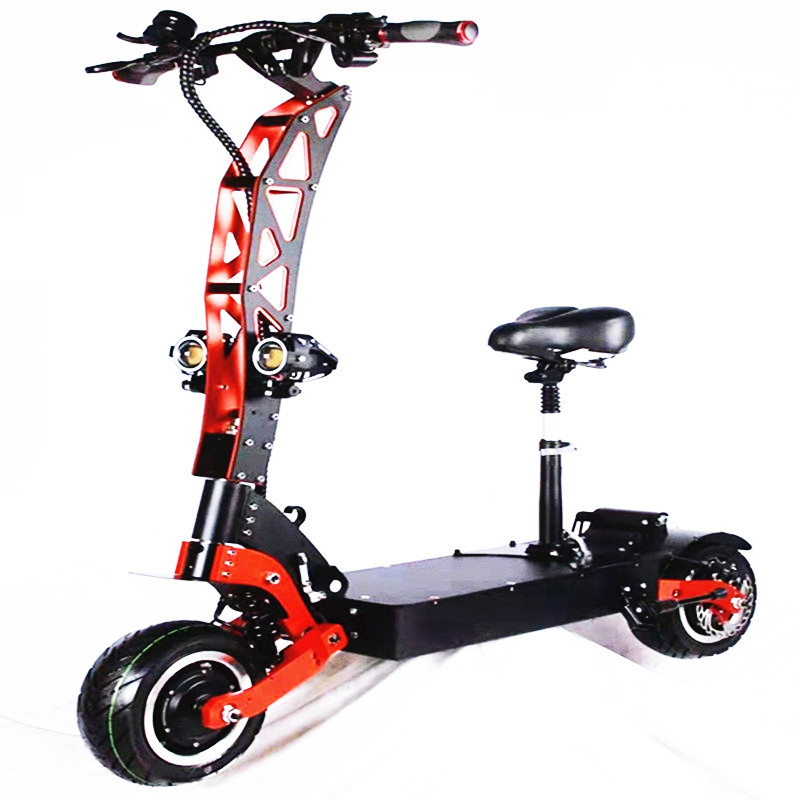
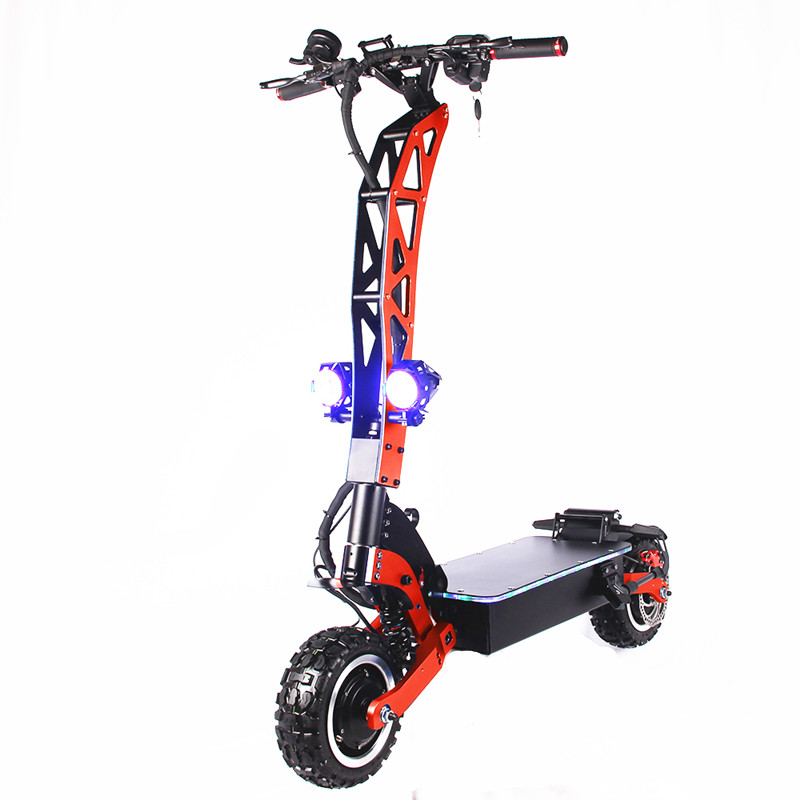
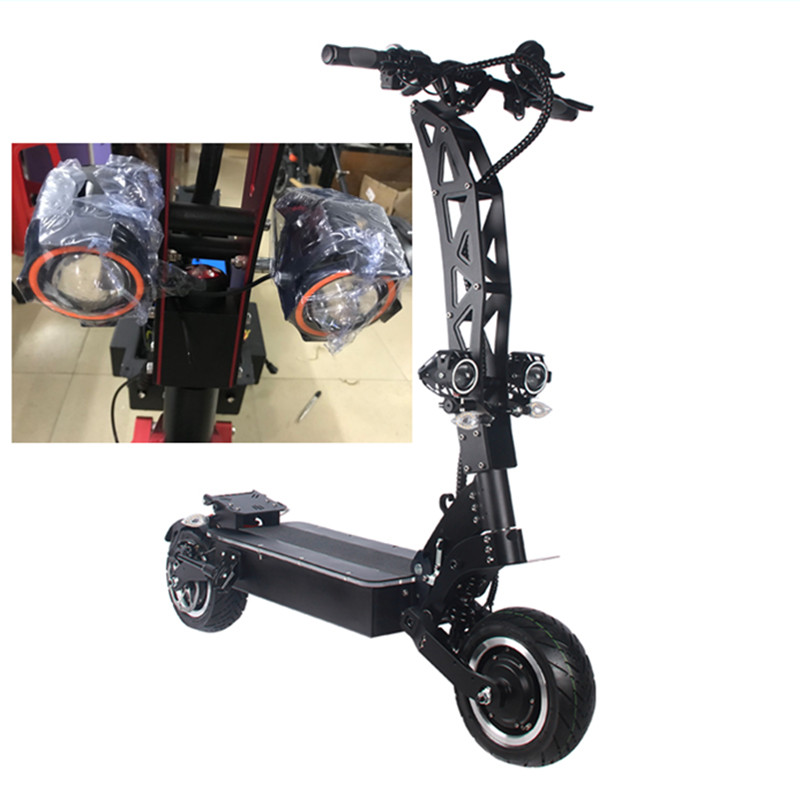
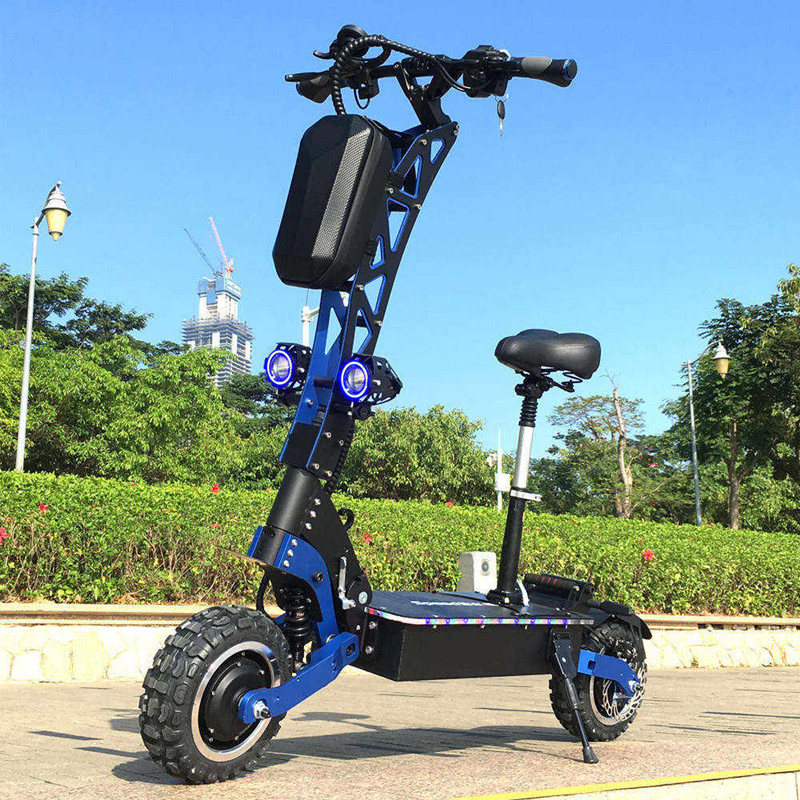
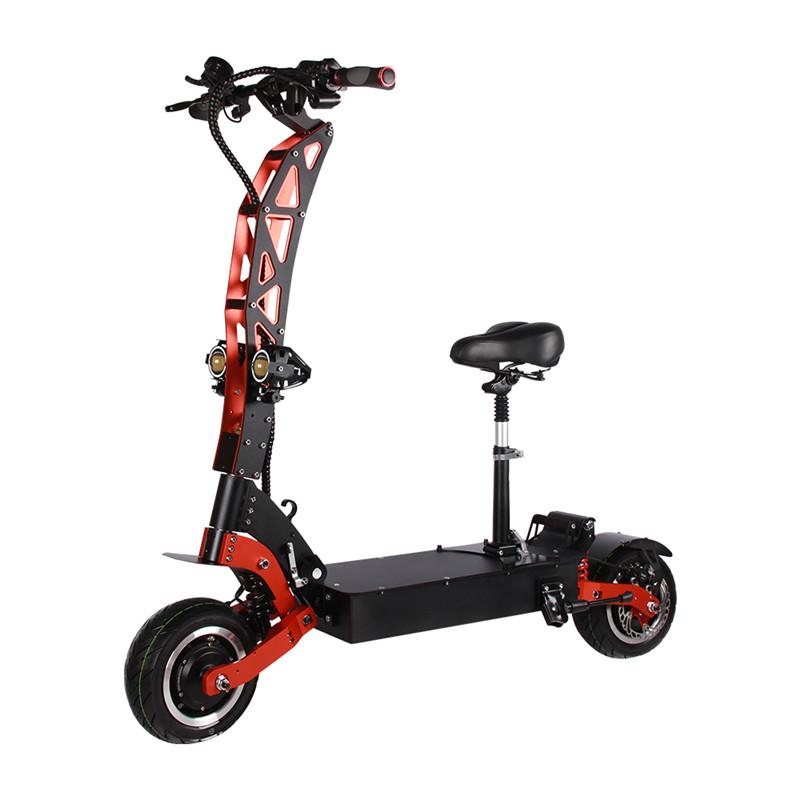




Chapter 1: Inspiration from Innovation
Alex and Lily stood in the exhibition hall, looking through the crowd and scanning the various exhibits. They were shocked by the innovative technology in front of them, but they were also disappointed. Despite the amazing advancements in technology, they found that few products could truly solve environmental problems, especially pollution in the transportation sector. Looking at the cars, motorcycles and bicycles in the showroom, they all realized the destructive power of these traditional means of transportation on the environment. Alex frowned, thinking about how he could use his engineering skills to solve this problem. And Lily stared at him, knowing that he must have a bold idea.
Alex and Lily left the exhibition and returned to their studio filled with excitement. They began discussing how electric scooters could be combined with solar technology to solve pollution problems in urban traffic. Alex took out the design he had drafted, and Lily looked at his focused eyes and knew they had taken the first step.
Chapter 2: The Difficulties of Starting a Business
Alex and Lily sat in the office, facing stacks of financial reports and market research data. They are working to raise funds for a new e-scooter project. While they were confident in the idea, the reality turned out to be much tougher than they imagined. Banks were skeptical of their projects, and venture capital firms weren’t paying enough attention. Faced with this dilemma, Alex and Lily decided to seek other avenues.
They decided to participate in the entrepreneurship competition, hoping to use this platform to showcase their creativity and potential and attract more people to pay attention to and support their projects. After some hard work, they successfully entered the final stage of the competition. On stage, they presented their e-scooter prototype to judges and an audience, describing how it has the potential to solve environmental problems and improve urban transportation.
Chapter 3: The challenge of competition
Jack is Alex and Lily’s rival and has similar environmental ideals. However, he did not agree with their design philosophy and believed that their methods were too complex to be mass-produced. So Jack decided to launch a simpler and cheaper electric scooter on the market to seize market share.
Jack’s product quickly became a success in the market, and sales soared. Alex and Lily faced intense competitive pressure and their sales fell. However, Alex was undeterred, knowing that their unique designs and innovative technology could truly change the world. He is determined to continue to improve products and increase production efficiency to meet market demand.
Chapter 4: Market Recognition
Alex and Lily have finally launched an adult version of their white electric scooter. This model is more concise and fashionable in design, attracting a large number of consumers. People are buying this environmentally friendly and convenient means of transportation, and more and more white electric scooters are appearing on city streets.
The market response exceeded their expectations and their sales gradually increased. The media also began to pay attention to this innovative product, reporting on its environmental protection features and market prospects. Alex and Lily’s efforts were finally recognized and their electric scooter became a hot product on the market.
Chapter 5: Commitment to Sustainable Development
Alex and Lily sat in their office, reflecting on their accomplishments over the past few months. They realized that their electric scooters had changed urban transportation, reducing tailpipe emissions and noise pollution. However, they also know that this is only the first step, and they have a more important goal – to promote the development of sustainable transportation.
Alex began researching how to further improve e-scooter battery technology to increase range and charging efficiency. Lily set out to develop a long-term sustainability plan, including promoting the use of electric scooters, reducing carbon emissions, and supporting environmental organizations and community projects.
Chapter Six: Future Outlook
Alex and Lily stood in the company’s conference room, announcing their latest plans to employees. They decided to expand production capacity and launch more electric scooter styles to meet the needs of different consumers. They also plan to expand the global market and bring electric scooters to more countries and regions.
Alex and Lily are full of expectations and longing for the future. They know that there are still many challenges waiting for them on the road, but they believe that as long as they adhere to the concepts of innovation and sustainable development, their company will be able to achieve greater success. They are determined to continue working to create a cleaner, greener transportation future for people.

